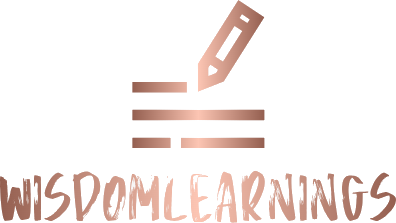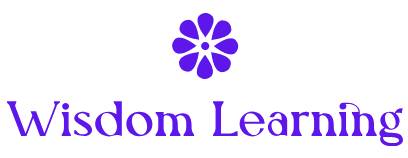Table of Contents
Effective communication is a cornerstone of success in any professional environment. It enhances collaboration, fosters a positive work culture, and drives productivity. This article explores essential communication skills for the workplace and offers practical strategies for improving these skills to achieve professional growth and organizational success.
1. Active Listening
1.1. Importance of Active Listening
Active listening is a crucial component of effective communication. It involves fully concentrating, understanding, and responding thoughtfully to what others are saying. Active listening demonstrates respect and validates the speaker’s perspective, leading to more productive and meaningful interactions.

1.2. Techniques for Active Listening
- Maintain Eye Contact: Show engagement by making and holding eye contact with the speaker.
- Provide Verbal and Non-Verbal Feedback: Use nods, affirmations like “I see” or “I understand,” and appropriate facial expressions to signal understanding.
- Paraphrase and Summarize: Reflect back what you’ve heard to confirm understanding. For example, “So, what I hear you saying is…”
- Avoid Interrupting: Allow the speaker to finish their thoughts before responding. This shows respect and allows for a complete understanding of the message.
2. Clear and Concise Messaging
2.1. Importance of Clarity
Clear and concise communication helps prevent misunderstandings and ensures that your message is easily understood. It involves delivering information in a straightforward manner without ambiguity or excessive jargon.
2.2. Strategies for Clear Communication
- Organize Your Thoughts: Plan what you want to say before speaking. Use outlines or key points to structure your message logically.
- Be Direct and Specific: Use precise language to convey your message. Avoid vague terms and provide concrete examples when necessary.
- Simplify Complex Information: Break down complex ideas into manageable parts and use analogies or visual aids if needed.
- Ask for Feedback: Encourage questions or clarifications to ensure your message has been understood correctly.
3. Non-Verbal Communication
3.1. Understanding Non-Verbal Cues
Non-verbal communication includes body language, facial expressions, gestures, and tone of voice. These cues can significantly impact how your message is received and interpreted. Being aware of your non-verbal signals and those of others can enhance communication effectiveness.

3.2. Key Aspects of Non-Verbal Communication
- Body Language: Maintain an open posture, avoid crossing arms, and use appropriate gestures to reinforce your message.
- Facial Expressions: Ensure that your facial expressions match the content of your message. Smiling can convey friendliness and approachability.
- Tone of Voice: Be mindful of your tone, pitch, and volume. A calm and confident tone can enhance the clarity of your message.
- Active Engagement: Use non-verbal signals, such as nodding and maintaining eye contact, to show attentiveness and engagement during conversations.
4. Empathy and Emotional Intelligence
4.1. The Role of Empathy
Empathy involves understanding and sharing the feelings of others. It is a vital skill in building strong relationships and resolving conflicts. Demonstrating empathy shows that you value others’ perspectives and are willing to support their needs.
4.2. Developing Empathy in Communication
- Acknowledge Emotions: Recognize and validate the emotions expressed by others. For example, “I understand that this situation is frustrating for you.”
- Show Genuine Concern: Express care and interest in others’ well-being. Ask open-ended questions to understand their feelings and concerns.
- Practice Active Listening: Use active listening techniques to fully grasp the emotional context of the conversation.
4.3. Emotional Intelligence
Emotional intelligence involves managing your own emotions and understanding others’ emotions. It includes self-awareness, self-regulation, motivation, empathy, and social skills. Developing emotional intelligence enhances communication and helps build positive relationships.

5. Constructive Feedback
5.1. Providing Constructive Feedback
Giving and receiving feedback is essential for personal and professional growth. Constructive feedback helps individuals improve their performance and fosters a culture of continuous improvement.
5.2. Techniques for Constructive Feedback
- Be Specific: Focus on specific behaviors or actions rather than general traits. For example, “I noticed you met the project deadline ahead of schedule,” rather than “You’re doing great.”
- Be Timely: Provide feedback soon after the event to ensure it is relevant and actionable.
- Use the “Sandwich” Approach: Start with positive feedback, address areas for improvement, and end with encouragement or additional positive comments.
- Encourage Dialogue: Allow the recipient to respond and discuss the feedback. This promotes understanding and collaborative problem-solving.
6. Conflict Resolution
6.1. Addressing Conflicts Effectively
Conflicts are inevitable in any workplace, but how you handle them can impact team dynamics and productivity. Effective conflict resolution involves addressing issues constructively and finding mutually acceptable solutions.
6.2. Steps for Resolving Conflicts
- Stay Calm and Objective: Approach conflicts with a calm demeanor and focus on the issue, not personal attacks.
- Listen to All Parties: Hear all perspectives before making judgments or decisions. This ensures that everyone feels heard and valued.
- Seek Common Ground: Identify shared goals or interests and work towards solutions that benefit all parties involved.
- Develop Action Plans: Agree on specific actions or changes to address the conflict and prevent future issues.
Conclusion
Effective communication skills are essential for fostering a positive and productive work environment. By mastering active listening, clear messaging, non-verbal communication, empathy, constructive feedback, and conflict resolution, professionals can enhance their interactions and contribute to a more collaborative and harmonious workplace. Investing in these skills not only improves personal effectiveness but also strengthens team cohesion and drives overall success. Through continuous practice and refinement, individuals can achieve excellence in workplace communication and build stronger, more resilient professional relationships.


